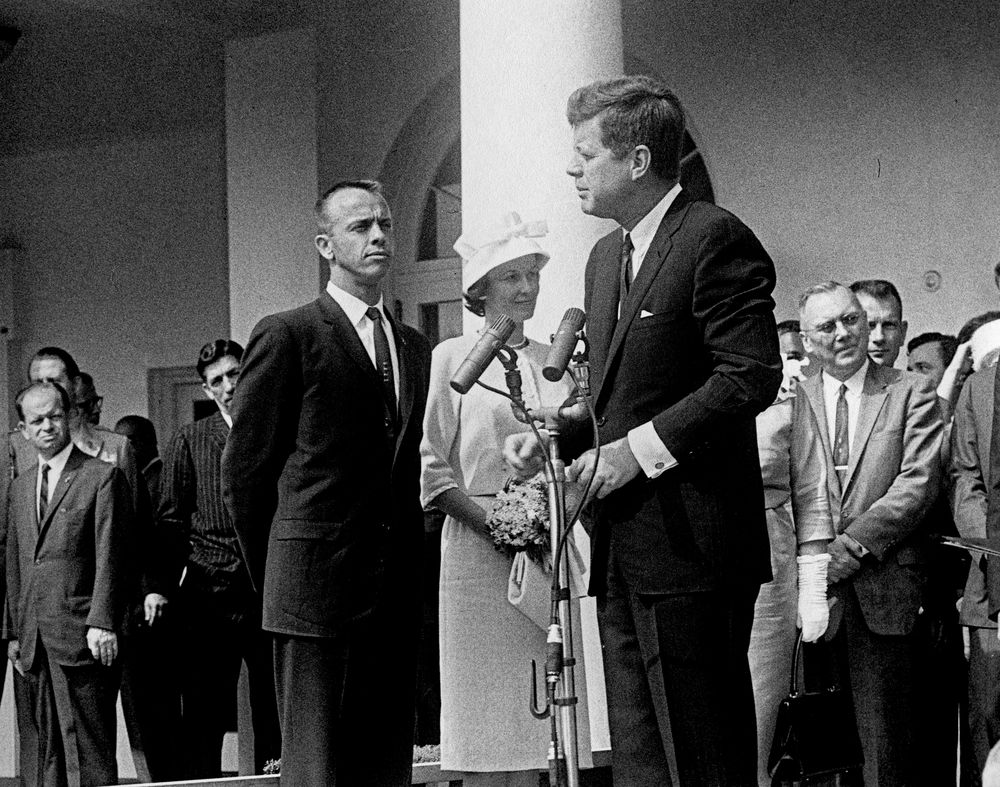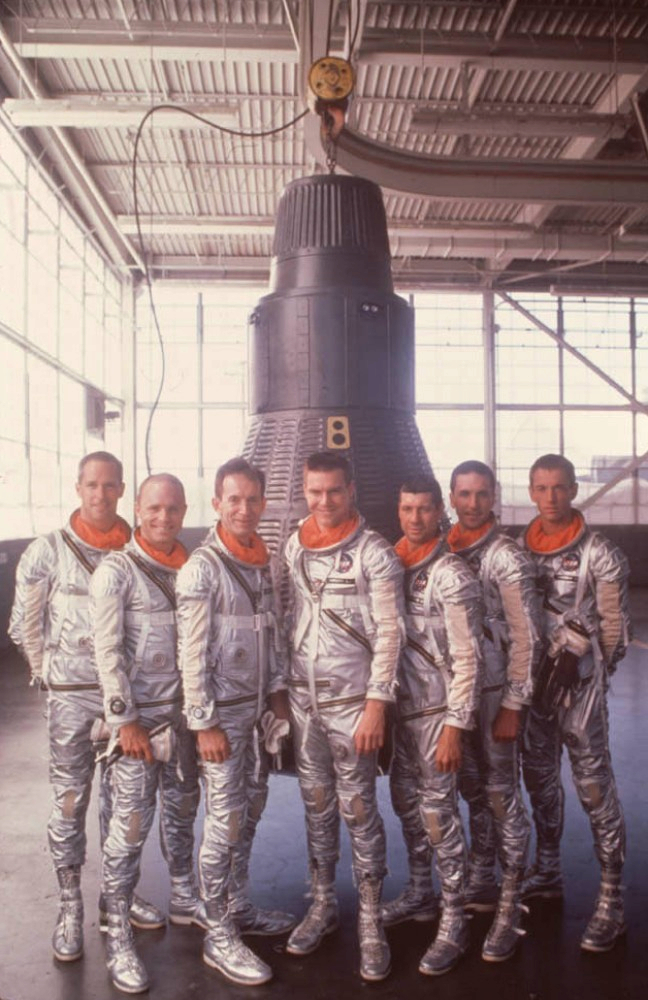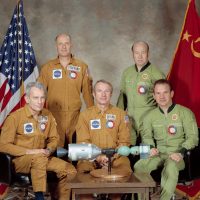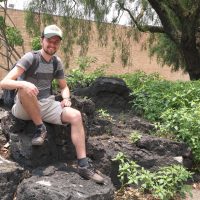Listen to this post as a podcast:
The second person to fly into space—and the first from the United States of America—was a 37-year-old Navy test pilot from New Hampshire named Alan Shepard. He soared into space on a suborbital hop aboard a Mercury-Redstone booster sixty years ago today, on Wednesday, May 5, 1961.
Alan Shepard was one of seven test pilots selected in 1959 by the National Aeronautics and Space Administration (NASA) as its first class of astronauts. While the Soviet cosmonauts trained in utmost secrecy and anonimity, NASA’s Original Seven Mercury astronauts lived in the glare of spotlights and flashbulbs. They had their public debut at a dazzling press conference on April 9, 1959 in Washington, DC, and they appeared regularly in the press in the following years.
An important aspect of the Mercury astronauts’ celebrity was the LIFE Magazine contract. In a controversial move, the seven astronauts signed a contract with America’s leading photography and news magazine for exclusive rights to their stories. LIFE photographers and writers followed the astronauts in their training, public relations, and home lives. Staff writers ghost-wrote first-person accounts of the astronauts’ experiences, including their flights into space. These accounts were edited into a book, We Seven, published by Simon & Schuster in 1962. The book covers the first four missions in the Mercury series, but misses the last two, by Wally Schirra and Gordon Cooper.
The celebrity of the Mercury astronauts revealed much, but it also obscured much else. Thanks in large part to the LIFE contract, the public could take intimate looks inside the astronauts’ home lives and ride along with them in their capsules into space. But by focusing on the astronauts, the media coverage glossed over the way in which the people who would ride in the capsule were just a small part of an undertaking much bigger than themselves. True, there could be no manned spaceflight without men to fly into space. But the Mercury program also never could have happened without thousands of other engineers, mathematicians, physicists, technicians, factory-workers, flight controllers, publicists, helicopter pilots, Navy frogmen, and other men and women working at NASA centers, other supporting government agencies, and civilian contractors.
The astronauts’ fame also made the men into something more than they were: engineers and test pilots engaged in an exacting technical endeavor. The fame turned the astronauts into superheroes.
The definitive chronicle and deconstruction of the Mercury astronauts’ hero-dom is Tom Wolfe’s 1979 book The Right Stuff. Based on extensive interviews and crafted with Wolfe’s insightful wit, the book portrays an America hungry for heroes in the Cold War. Yet while the book deconstructs the legend of the macho hero-astronaut, it also does much to perpetuate it, as does its 1983 film adaptation.
For Alan Shepard himself, fame would be fleeting. After his flight, he was featured in LIFE magazine, invited to the White House, and fêted and ticker-taped around the country. But even though he was the first American to enter space, he would soon be upstaged by his colleague John Glenn, who passed into the realm of legend after becoming the first American to orbit the Earth in 1962.

Picture: Alan Shepard and his wife Louise at the White House on May 8, 1961, when America’s first man in space received the NASA Distinguished Service Medal from President John F. Kennedy. (Source: JFK Library, AR6569-H.)





Suzan Logan
Dad and I just listened to your first two podcasts about manned space flights by the Soviet Union and the US. I really enjoyed them and now I’m anxiously waiting for the two remaining podcasts in this series.
Willy
Oh thank you! The third and fourth episodes won’t come out until July and August respectively, so I’m afraid you’ll have to wait. In the meantime, I hope to have an episode about rocket testing in Sacramento ready soon.